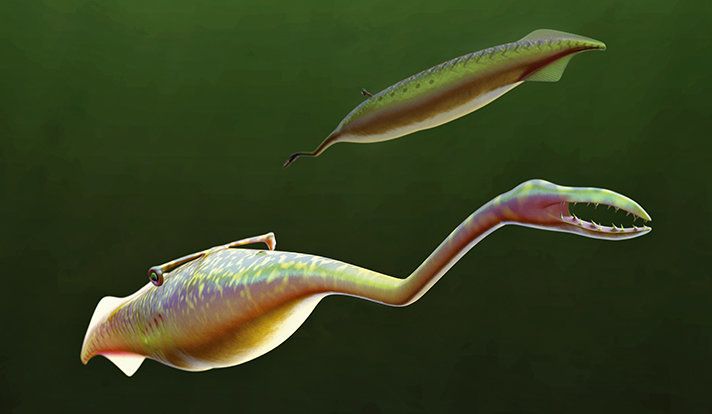It is unlikely that there exists a creature more bizarre, more alien to our understanding of how life evolved on Earth, than Tullimonstrum gregarium.
Known as the “Tully Monster”, this truly odd-looking creature existed around 300 million years ago.

While we know what it looks like, and indeed where to find it, experts have been stumped by one single aspect of this bizarre creation of nature. No-one can actually agree on what it is.
It was initially decided last year by a team from Yale that Tully was in fact a vertebrate. However a team from the University of Pennsylvania have now claimed that actually this could all be wrong and that once again, Tully’s identity is a complete mystery.
About a foot long with a rigid stalk of eyes on either side, the Tully has a long protruding beak with an oddly shaped claw face perched on the end.
Last year researchers breathed a sigh of relief after a team from Yale University declared that definitively the Tully Monster was in fact a vertebrate.
By examining 1000s of fossils that had been collected around Mazon Creek in Illinois, the team concluded that they had found a common theme among many of them.
A light line running down the middle was believed to be a ‘notochord’ - a flexible rod that formed the basis for an early backbone.
Another study from last year also argued that Tully was a vertebrate after an examination of the eyes suggested that it contained melanosomes - complex structures that meant Tully was in all probability a vertebrate.

Now though Penn State’s Lauren Sallan believes that these evaluations are far from perfect.
For starters Sallan and her colleagues noted that the conclusions made last year were based on a misunderstanding of how fossils are preserved in Mazon Creek.
“In the marine rocks you just see soft tissues; you don’t see much internal structure preserved,” Sallan said.
Sallan and her team also have an argument for the development of the Tully’s eyes as well.
While it’s true that the Tully seems to have highly complex eyes, there are still plenty of non-vertebrates that have evolved to develop complex eyes including arthropods and cephalopods like octopuses.
“Eyes have evolved dozens of times,” Sallan said. “It’s not too much of a leap to imagine Tully monsters could have evolved an eye that resembled a vertebrate eye.” explains Sallan.
In addition Sallan noted that many of the thousands of preserved fossils were missing key structures that are believed to be universal in all aquatic vertebrates notably otic capsules, components of the ear that allow animals to balance, and a lateral line, a sensory structure that enables fishes to orient themselves in space.
“You would expect at least a handful of the specimens to have preserved these structures,” Sallan said.
